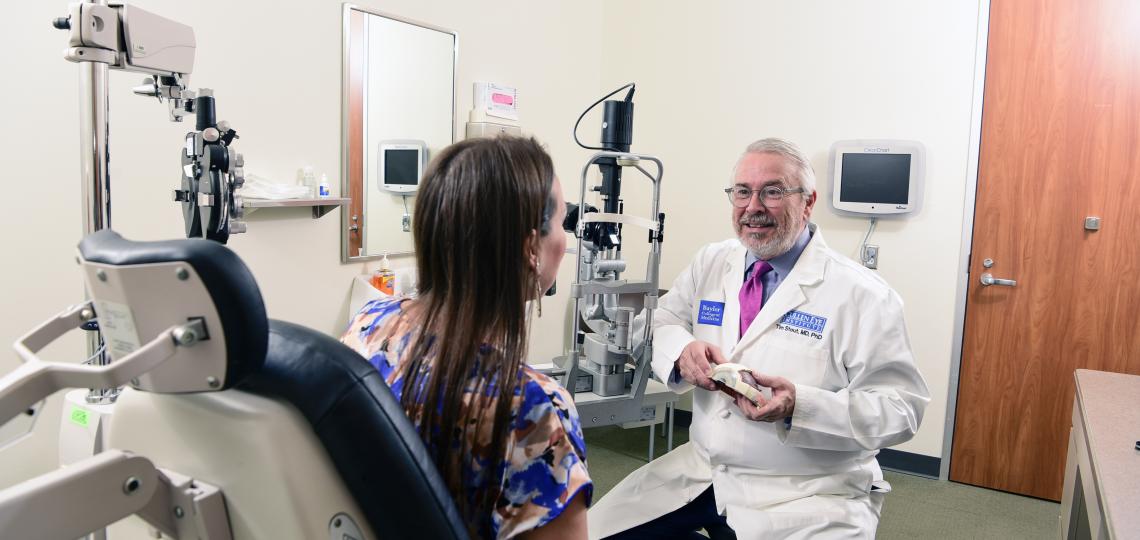The Advantages And Disadvantages of Different Refractive Surgical Procedures for Enhanced Eyecare

LASIK Surgical Treatment
LASIK surgery is a frequently executed refractive procedure that intends to remedy vision issues such as nearsightedness, farsightedness, and astigmatism. Throughout the treatment, a slim flap is developed on the cornea, and a laser is made use of to reshape the underlying cells, dealing with the refractive error.
One of the key advantages of LASIK surgical procedure is the rapid renovation in vision experienced by lots of individuals. It is necessary for people thinking about LASIK surgical treatment to undertake a detailed evaluation by an eye treatment expert to figure out if they are suitable prospects for the treatment.
PRK Procedure
The PRK procedure, additionally called Photorefractive Keratectomy, is a type of refractive surgical procedure that intends to remedy vision problems similar to LASIK surgical treatment. Unlike LASIK, which involves creating a flap in the cornea, PRK services the surface area layer of the cornea. During the PRK procedure, the outer layer of the cornea, called the epithelium, is gotten rid of to enable reshaping of the underlying corneal tissue with an excimer laser. This reshaping aids to remedy refractive mistakes such as astigmatism, farsightedness, and nearsightedness.
One of the benefits of PRK over LASIK is that it eliminates the threat of flap-related difficulties given that no flap is developed throughout the surgical procedure. Despite the longer recovery period, PRK can be an ideal option for individuals looking for vision modification surgical treatment.
SMILE Surgical Treatment
An advanced refractive surgery technique gaining appeal in the field of ophthalmology is SMILE Surgery. Small Laceration Lenticule Removal (SMILE) is a minimally invasive procedure that remedies vision by improving the cornea using a femtosecond laser. Unlike traditional LASIK surgical procedure, SMILE Surgery includes developing a little laceration in the cornea to remove a lenticule, which causes much less disruption to the corneal structure and potentially much faster healing times.
One of the main advantages of SMILE Surgical treatment is its capacity to treat myopia (nearsightedness) and astigmatism with high accuracy, leading to outstanding visual outcomes for patients. The minimally invasive nature of the treatment likewise minimizes the danger of issues such as completely dry eye syndrome, making it a beneficial option for individuals seeking refractive surgical treatment.

LASEK Technique
Having actually explored the advantages and considerations of SMILE Surgery, an additional significant refractive surgical procedure method worth analyzing is the LASEK Strategy. LASEK, which stands for Laser-Assisted Subepithelial Keratectomy, is a kind of laser eye surgery that aims to fix refractive errors such as nearsightedness (nearsightedness), hyperopia (farsightedness), and astigmatism.
Unlike LASIK, LASEK does not involve producing a corneal flap. Instead, during a LASEK treatment, the doctor utilizes a watered down alcohol solution to top article loosen up the thin outer layer of the cornea, known as the epithelium. This layer is after that gently relocated apart to allow the laser to reshape the underlying corneal tissue. Once the cornea has actually been reshaped to the desired degree, the epithelial layer is repositioned.
One of the main benefits of LASEK is that it can be appropriate for people with thin corneas who may not be great candidates for LASIK. Furthermore, LASEK generally results in minimal post-operative pain and a quicker recovery time contrasted to PRK. The aesthetic healing process with LASEK might be somewhat longer than with LASIK.
Implantable Call Lenses
Implantable Contact Lenses supply a long-lasting vision modification solution for people seeking an alternative to the original source conventional call lenses or glasses. These lenses, likewise recognized as phakic intraocular lenses, are surgically placed into the eye to correct refractive errors such as nearsightedness (nearsightedness), hyperopia (farsightedness), and astigmatism. eye center andalusia. Unlike traditional get in touch with lenses that rest on the surface of the eye, implantable call lenses function within the eye itself, giving clear vision without the need for daily upkeep or elimination
Among the crucial advantages of implantable call lenses is their durability. Once inserted, they can stay in the eye indefinitely, providing consistent and stable vision correction. In addition, these lenses can be a superb navigate to these guys alternative for people who are not great candidates for laser eye surgery or that prefer a relatively easy to fix vision improvement treatment.
Nevertheless, implantable get in touch with lenses do carry some threats, consisting of the potential for cataracts or increased eye stress. It is vital for people considering this alternative to talk to an eye treatment specialist to figure out if implantable get in touch with lenses are the appropriate option for their particular demands and eye wellness.
Conclusion
In final thought, each kind of refractive surgical procedure has its very own benefits and drawbacks. LASIK surgical procedure is popular for its quick healing time, while PRK treatment might be suitable for individuals with slim corneas.

Generally, SMILE Surgery offers an encouraging option for individuals looking to boost their vision via refractive surgical procedure.
 Scott Baio Then & Now!
Scott Baio Then & Now! Michael J. Fox Then & Now!
Michael J. Fox Then & Now! Traci Lords Then & Now!
Traci Lords Then & Now! Lucy Lawless Then & Now!
Lucy Lawless Then & Now! Catherine Bach Then & Now!
Catherine Bach Then & Now!